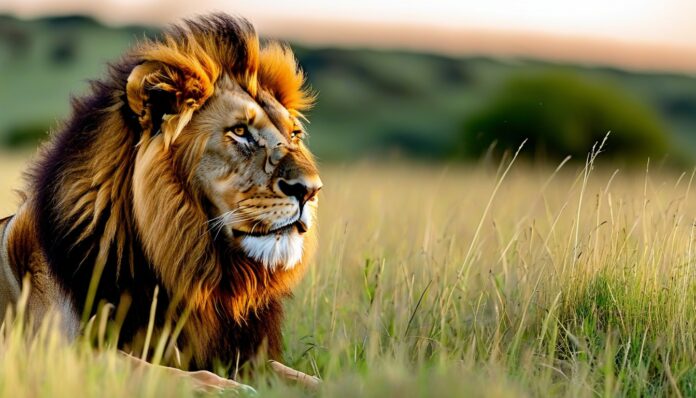Lions are known as the kings of the animal kingdom and the graceful rulers of nature. Their majestic appearance alone speaks of the unshakable dignity of these proud predators. Undoubtedly, lions evoke admiration and interest in many people. Upon closer observation of their behavior, relationships, and characteristics, you can discover a wealth of fascinating information about the lion pride.
Let’s start with some current statistical data.
- Habitat. A few centuries ago, lions inhabited vast territories across various continents, including Europe and Asia. Sadly, human influence played a role in their current distribution. Today, lions are found only in Africa, in India, and in specially created reserves. The most suitable environments for these “kings of beasts” are plains and savannas. Currently, there are about 50,000 lions left, many of which are kept in captivity. People are working to create better living conditions to increase their lifespan. In captivity, lions can live up to 30 years, which is twice as long as in the wild.
- Distinctive Features. Despite their size, lions are only the second largest members of the cat family, with tigers being larger. Lions also have relatively small brains and hearts, which can be an advantage when poachers attempt to kill them by targeting these organs. In addition, lions are excellent jumpers and runners. They have a keen sense of smell, allowing them to detect prey from distances of up to 1.5 km.
- Relationships. Lions, like many animals, are not immune to love. Unlike many other creatures, they prefer to live in families known as prides. The head of the pride is one strong male responsible solely for reproduction. All other key roles fall to the females, whose numbers can vary. They hunt, gather food, care for the young, and protect the pride. The mating period for lions lasts about a week, during which a lion and lioness can mate around 100 times a day. This process is exhausting, leaving the pair with no energy to hunt or search for food. Male lions are known for their love of mating, and in the absence of a female, they may seek out tigresses, panthers, or other members of the cat family. However, offspring from such unions are unlikely to survive.
- Behavior. The graceful slowness of the “king of beasts” is partly due to their laziness. Unless extreme heat or danger forces them to move, lions can lie in one spot all day. If they aren’t hungry, they won’t bother to hunt. Lions also love sleep, spending up to 20 hours a day resting. A male lion’s roar can be heard from 10 km away. This powerful sound is so strong that the air seems to tremble, and it helps lions scare off potential threats.
- History. For centuries, people have respected lions. In ancient Egypt, lions were considered sacred due to their strength and authority. In the Middle Ages, many noble families and royal courts featured lions on their coats of arms, with the lion’s position on the emblem carrying special meaning. Even today, some countries use lion symbols. Lions are also popular in art, literature, jewelry, and other areas of life, representing power and dominance.
In addition to these points, here are some other interesting facts about lions and their unique characteristics:
- Despite their relatively short height (180-190 cm), males can weigh up to 250 kg, and females up to 180 kg. This weight doesn’t stop them from being agile and quick.
- Newborn lion cubs weigh only 1-2 kg, are blind, and are considered children until the age of two. However, only one in five cubs survives to that age.
- A typical lion meal is 7 kg of meat for a male and 5 kg for a female, though they can eat up to 30 kg in one sitting if given the opportunity.
- Lions have 30 sharp teeth, which they use to tear apart their prey. However, they can’t chew food and swallow large chunks of meat whole.
- Lions are nomadic and rarely stay in one place for long. They move to avoid attracting enemies with the smell of accumulated prey.
- Teamwork is key for lions. One in three group hunts is successful, while solo attempts succeed only once in five or even ten tries.
- The largest member of the cat family to ever live was a lion. The cave lion, which went extinct 10,000 years ago due to an ice age, once roamed Siberia.
- Male lions are unique—no two are exactly alike, as each has distinct physical features.
- The usual lion coat color is reddish-brown, but some lions have white fur. These lions are not albinos; their coloration is due to a genetic mutation called leucism.
- The lion’s mane is more than just hair—it plays a key role in attracting females during mating season. The fuller and darker the mane, the more appealing the male is to potential mates.
